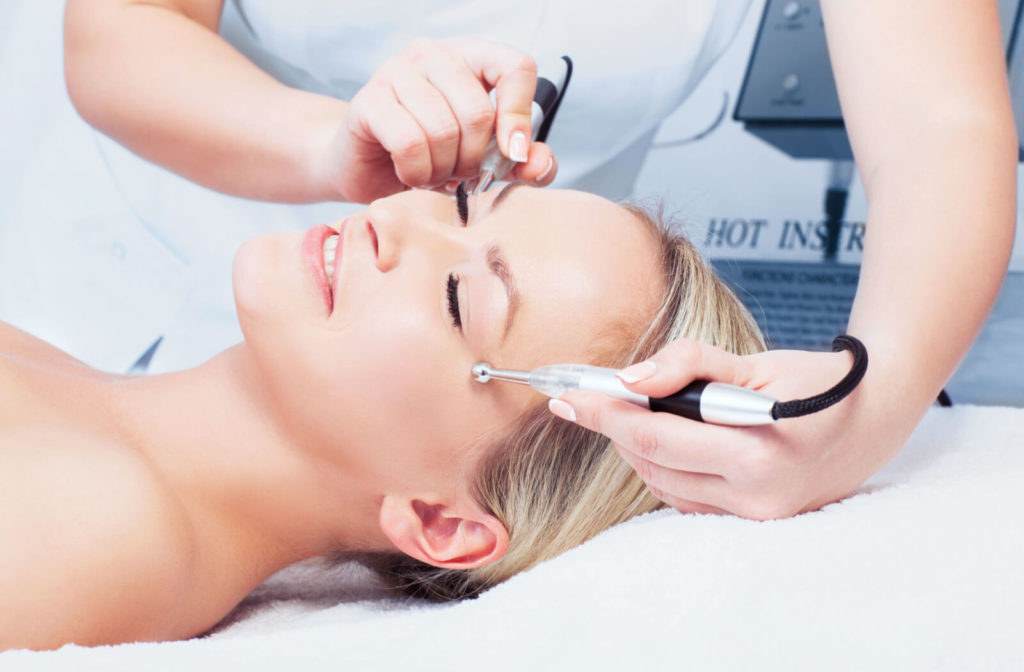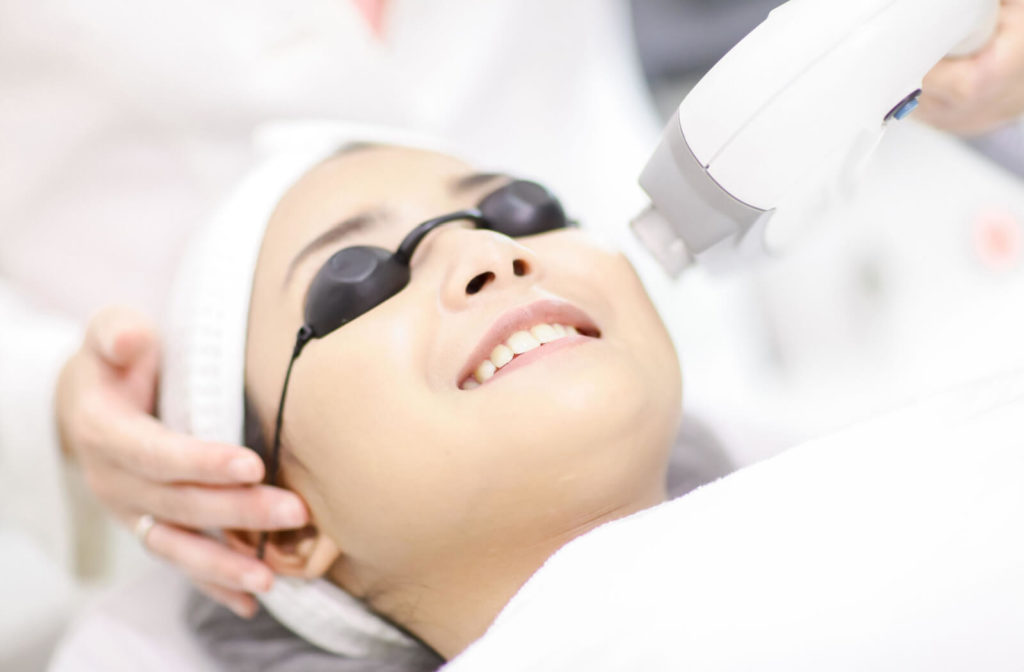Dry eyes can be irritating and uncomfortable, but you can find relief from your symptoms. Your eye doctor has several treatments available when you have dry eyes. Two of these treatments are intense pulsed light (IPL) and radiofrequency (RF) treatment, but what are they, and which treatment is best?
The best dry eye treatment depends on the individual. Each patient has different needs, skin type, medical history and some dry eye treatments may be more effective than others. At Vector Eye Centre, your eye care team including Ophthalmology, Optometry and a Cornea and Ocular Surface specialist are all here for this reason—to help determine what treatments meet your dry eye needs.
What Is Dry Eye?
Dry eye is a common eye condition approximately 6 million Canadians reportedly live with. You experience dry eyes when your tears cannot effectively lubricate your eyes, leading to irritation. If left unaddressed, dry eyes can cause significant discomfort and affect your quality of life.
Dry eye occurs when you have issues in your tear film, 3 layers (mucus, water, and oil) that work together to protect your eye. These different layers keep your tears fastened to the eye’s surface, hydrate the eyes, and prevent tears from evaporating too quickly.
Common dry eye symptoms include:
- A stinging, burning sensation in the eyes
- Stringy mucus in or around the eyes
- Light sensitivity
- Red eyes
- The feeling as if something is stuck in your eyes
- Trouble wearing contact lenses
- Watery eyes
- Blurry and fluctuating vision
What Causes Dry Eye?
There are 2 main causes of dry eye:
- Aqueous tear-deficient dry eye occurs when your body doesn’t produce enough water for your tears, leading to dry eyes.
- Evaporative dry eye occurs when your meibomian glands don’t produce or release enough oil to prevent your tears from evaporating too quickly, causing dry eyes.
These underlying causes of dry eye happen when issues arise in the tear film. The tear film can experience problems for several reasons.
Some common causes of dry eyes include:
- Medical conditions
- Medication use
- Meibomian gland dysfunction
- Dry air
- Infrequent or incomplete blinking
- Genetics & age
Treating Dry Eye
Many ways of treating dry eyes exist today, including eye drops, topical medications, dietary changes, and in-office treatments. Depending on your needs, your eye doctor may recommend intense pulsed light (IPL) therapy or radiofrequency (RF) treatment to help relieve your symptoms.
What Is IPL?
Intense pulsed light (IPL) therapy is a treatment for patients with dry eyes caused by meibomian gland-related issues. Without proper oil flow, tears evaporate too quickly. IPL uses scattered light pulses to improve your dry eye symptoms.
During IPL therapy, light pulses help treat the inflamed blood vessels in and around your eyes. The emitted light also heats your meibomian glands, and combination of IPL treatment with manual expression of the lids removes blockages so the oil can flow freely from these glands. IPL relieves dry eye symptoms by addressing the cause of your irritation.
In our evidence based model, patients typically need three treatment sessions, with manual expression, to obtain the full benefit from IPL treatment. Furthermore, some patients continue to choose maintenance treatments on a 6 to 12 month basis following the initial series of treatments.
With time, IPL can benefit dry eyes—previous research on this treatment found it can improve tear breakup time in 87% of patients.

What Is RF Treatment?
Radiofrequency (RF) treatment uses heat to help improve dry eye symptoms. Heating the skin unclogs the meibomian glands, and manual expression of the glands after treatment aids in stimulating oil flow.
RF treatment releases electromagnetic waves to treat dry eye. The heat generated during treatment melts whatever is blocking the meibomian glands. Additionally, RF treatment can reduce inflammation (which worsens your symptoms).
While RF treatment can benefit dry eyes, you typically need several sessions to reach your desired results. Just like with IPL, some patients will continue with maintenance treatments on a 6 to 12 month basis following the initial series to maintain optimal results.
Which Dry Eye Treatment Is Best for You?
When treating dry eyes, which is better, IPL or RF?
The best dry eye treatment depends on the individual. Each patient has different needs, different eyelid and meibomian gland anatomy and some dry eye treatments may be more effective for some than others.
Both IPL and RF treatment help address the root cause of your dry eye symptoms, making them beneficial for improving your daily comfort. These treatment methods are best for patients with dry eyes caused by meibomian gland-related issues. They may not be ideal if your dry eyes occur because of a different reason, and in these cases, would not be recommended.
The best dry eye treatments are the ones recommended by your Ophthalmologist and Corneal/Ocular Specialist after careful and comprehensive evaluation. We can create a treatment plan after completing a comprehensive eye exam to assess your meibomian glands, eyelid architecture and function, blinking capacity and consistency, tear film stability, skin type, medical history, and current medications.
At Vector Eye Centre, our advanced diagnostics and clinical expertise are fundamental in diagnosing and offering you the appropriate treatments and plan for your underlying dry eye condition.
Relieve Your Dry Eyes
Dry eyes can be irritating and uncomfortable, making everyday life more difficult. However, you can improve your comfort with help from our team at Vector Eye Centre. We can determine the cause of your discomfort and recommend a customized treatment plan to relieve your symptoms.
Contact Vector Eye Centre if you experience dry eye symptoms.



